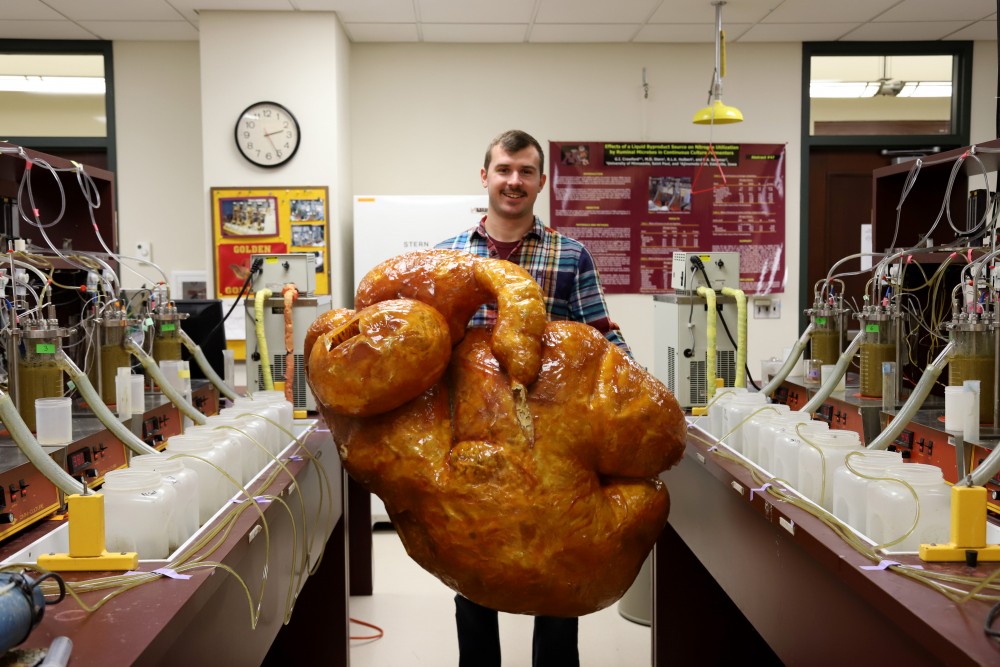A recent study at the University of Minnesota is among the first to use a non-invasive research method to investigate cow digestion and improve animal health.
The study, which began late last month, uses a non-invasive method of researching cows and observes the effects of enzyme additives to increase efficiency in animal production. This method, called in vitro, simulates a certain digestive system in cows in a laboratory setting.
“We can study things in the laboratory … rather than in animals directly,” said Marshall Stern, an animal science professor at the University leading this research. The study is currently taking place in Stern’s lab on the St. Paul campus.
The researchers are studying the effect of various enzymes on microbial fermentation, which is the breaking down of food that enters the animal’s stomach by microbes. Microbes are small organisms in the stomach.

Microbial fermentation is the main process by which cows digest nutrients. The nutrients the cows absorb then translate into their overall health and efficiency.
“We’re hoping that by including enzymes, we can increase the efficiency, so later … the animals can be more efficient in food protein, whether that’s meat or milk,” said Trent Dado, a graduate research assistant conducting most of the trials for this research.
Using non-invasive methods allows more control of the experiments with less variation in results and less animals needed for research, Dado said.
“Having in vitro techniques to use instead of animals is always a good option to have,” he said.
There are only a few of these in vitro systems in the U.S., but more universities and companies are starting to implement them into their laboratories, Dado said.
“This is a unique tool that we have,” Stern said. “When students come to the University of Minnesota and come to my laboratory, I let them see what we offer research-wise because we aren’t just a teaching institution, we are also a research institution.”
Students who study animal science, whether they are planning on going to veterinary school or studying nutrition in animals, often share an interest in this non-invasive research, said Andrew Backman, a sophomore at the University studying pre-veterinary medicine.
“It’s some cutting-edge research at a University [and] it’s very applicable to the students,” he said. “I think it really opens up opportunities for those students who maybe … never thought [it] was an option for them.”
Some of Stern’s students end up working in his lab because it sparked their interest, Stern said.
“For students, it really opens doors to animal science,” Backman said. “There are a lot more opportunities out there for them.”
After the study on enzyme additives finishes within the next few months, Stern, Dado and another researcher, Andres Gomez, will begin conducting follow-up research on microbiomes, which are the population of microbes in an environment such as a stomach.







